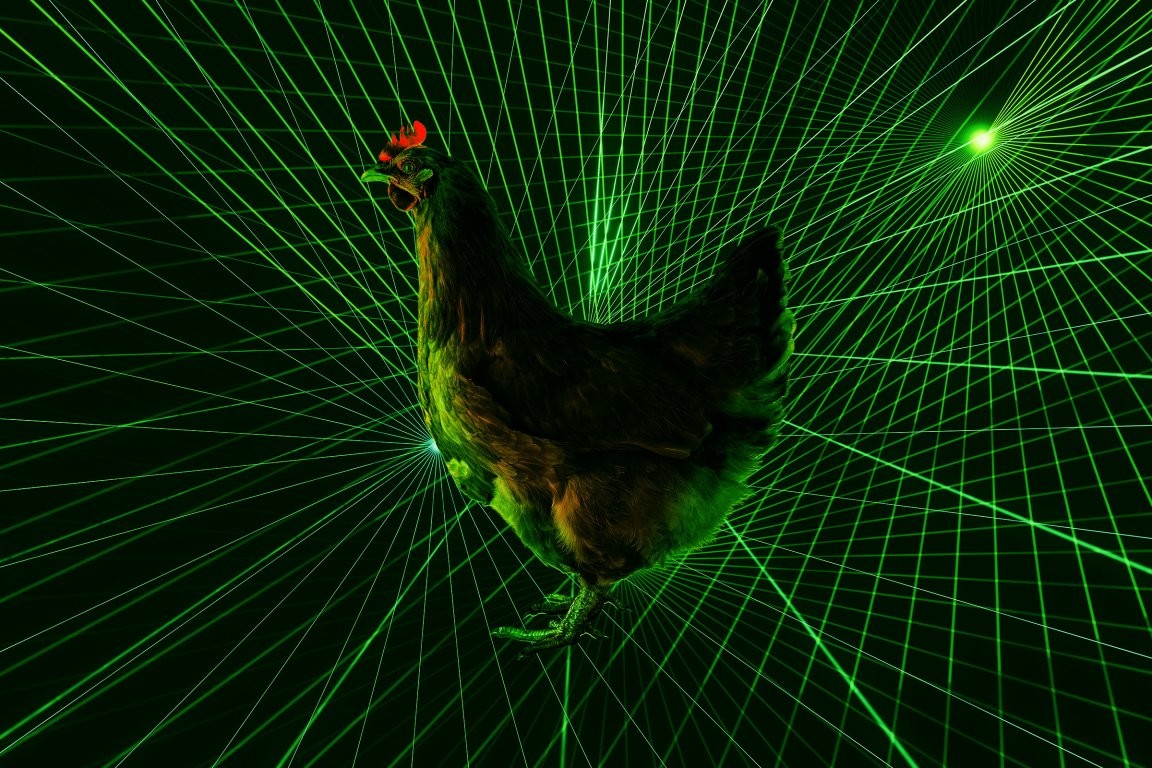Five Million Chickens Euthanized in January Alone — Now Japan Bets on Laser-Drones to Guard Its Farms
Five million chickens were euthanized in January alone as bird flu swept across Japan. In response, a Tokyo-area tech firm unveiled a bold solution: laser-equipped drones designed to patrol poultry farms and frighten away wild animals before they reach the coops. The system, developed by NTT e-Drone Technology Company Ltd, uses a laser-grid projector that beams red and green lasers to deter intruders. A teaser video shows the drone guiding away wild boar, stags, crows, pigeons, and waterfowl from a test area.

In This Article:
What Is the Laser-Drone and How Does It Work?
The drone’s payload is a laser-grid projector, reminiscent of a decorative light show. The quadcopter autonomously navigates toward nuisance animals and blasts them with a grid of lasers. The aim is to prevent bird flu and other infections by keeping predators and wild birds away from poultry flocks. The project is described in coverage by Tom’s Hardware, which summarized the concept and the technology.

Why Now? The Bird Flu Crisis in Chiba
Earlier this year, a massive bird flu outbreak devastated poultry farms in Chiba prefecture, east of Tokyo. Authorities deployed measures to contain the virus and protect the flocks. Nationwide, about five million chickens were euthanized in January, with roughly 3.3 million of those deaths concentrated in Chiba. The crisis pushed farmers to explore new tools, including automated drones.

From Nets to Lasers: What Sets This Apart
Current deterrence methods remain primitive: dangerous chemical deterrents, guard dogs, and netting. A laser drone promises a safer, potentially non-toxic alternative that could protect the food supply while reducing ecological damage. If the concept proves scalable, local subsidies could help farmers deploy the quadcopters across the prefecture. The project is a proof-of-concept developed in collaboration with the Chiba prefectural government, which is evaluating whether to adopt the drones going forward.

The Road Ahead: Ethics, Scale, and Governance
The drone remains a proof-of-concept as researchers await regulatory and logistical clarity. If approved, subsidies could enable wider deployment across the region, reshaping how farms protect flocks from disease and predation. The broader questions linger: how will safety, animal welfare, and ecological impact be balanced with innovation and governance? If successful, this technology could redefine farm management and disease prevention for agriculture.

